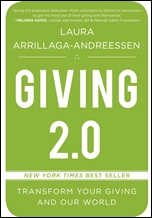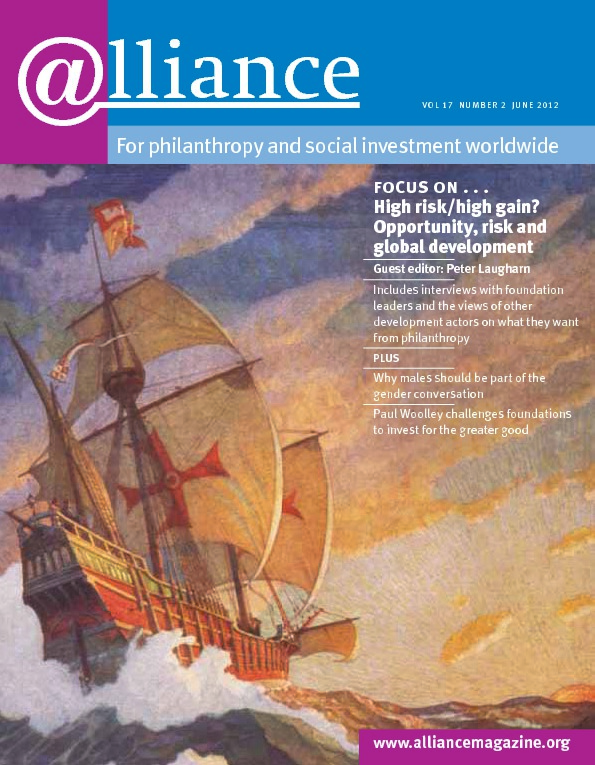 It’s the stories about ‘everyday’ philanthropists and regular people doing things to help others woven through this how-to guide about philanthropy that really catch the attention. Hector Chao’s story is one of these. Originally from Mexico, now a retired accountant living in Los Angeles, he gives his time and talents to help prepare annual tax returns for low-income taxpayers over 60. He does seven to ten returns a day, and is one of an army of more than 34,600 people across the US providing these services free of charge every day.
It’s the stories about ‘everyday’ philanthropists and regular people doing things to help others woven through this how-to guide about philanthropy that really catch the attention. Hector Chao’s story is one of these. Originally from Mexico, now a retired accountant living in Los Angeles, he gives his time and talents to help prepare annual tax returns for low-income taxpayers over 60. He does seven to ten returns a day, and is one of an army of more than 34,600 people across the US providing these services free of charge every day.
For the author, anyone who gives their time, effort or money is a philanthropist. ‘Giving’ – the importance to society, the personal and spiritual benefit that the act of giving bestows on the giver, and the need for all of us to give more of whatever we have, no matter how little or how much – is a constant refrain. The author illustrates the core themes of each of the book’s nine chapters by telling stories of people who give, including those involving significant contributions of personal wealth to charities. But it’s the humbling humanity of all these ‘givers’, driven by a simple desire to help those less well-off, that really stays with you … and none of them seem to do what they do in order to avoid paying tax!
Philanthropy is a much written and talked about topic these days – mostly by those who aren’t actually philanthropists but are rather advisers, academics, commentators and even Chancellors of the Exchequer. The author of this book, Laura Arrillaga-Andreessen, is actually a philanthropist with many years’ experience trying to figure out how to do the best for society with the resources available, and working with many others travelling on a similar journey. She’s packaged up this hard-earned knowledge in what is actually, leaving aside the uplifting (albeit occasionally over-sweet) stories, a very logical and practical foray through different kinds of philanthropic endeavour from volunteering through impact investing to support for campaigning and public advocacy.
There is comment throughout, as well as a separate chapter on family matters for the philanthropist – from how to involve one’s family in decisions about what cause or charity to support to the nuts and bolts of setting up and running a family foundation. These concerns may seem a bit of a distant reality to many readers but, in the world of US philanthropy at least, family really matters. Of the more than 70,000 philanthropic foundations registered in the US, more than half are family foundations run in one way or another by living family members – one third of these established between 2000 and 2009!
Each chapter is full of extremely sensible, experience-based narrative around the do’s and don’ts that a ‘new’ philanthropist needs to keep in mind if they are to successfully translate the urge to help into practical solutions to problems. Most chapters end with quite lengthy lists of questions to ask and things to think about, and the book contains numerous links to websites, such as http://www.giving2.com, that give all manner of additional information. But it’s the real experience of the author in actually doing philanthropy that imbues the advice given and insights offered with real worth.
The extensive experience of the author and her enthusiasm for imparting insights based on that experience also lies at the heart of the greatest weakness of Giving 2.0. It may sound odd but the practical usefulness of the book – which was a main objective of the author – is undermined by the overwhelming attention to detail. There’s just too much advice, too many insights, too many things to think about – all offered without much of a sense of proportion about which are the most important issues. The author clearly understands and communicates how critical it is that philanthropists take great care to assess accurate information about causes, consequences, options, impacts, performance and so on, at all stages in their journey. But she fails to be discerning enough about the relative importance of all the points made. As a consequence, information overload sets in early on in most chapters.
None the less, for those philanthropists among you who have the time to read a 312-page book and can take copious notes on those sections and insights relevant to your own concerns, Giving 2.0 is a refreshingly practical and pragmatic guidebook, full of common-sense observations that come only from real experience, about how to do good as best you can.
Kurt Hoffman is chief executive of the Institute for Philanthropy, London and New York. Email kurt.hoffman@instituteforphilanthropy.org
To order
http://www.wiley.com
Giving 2.0: Transform your giving and our world
Laura Arrillaga-Andreessen Wiley £17.99/$25.95
ISBN 9781118119401





Comments (0)